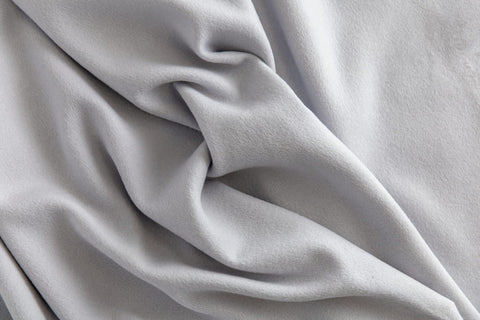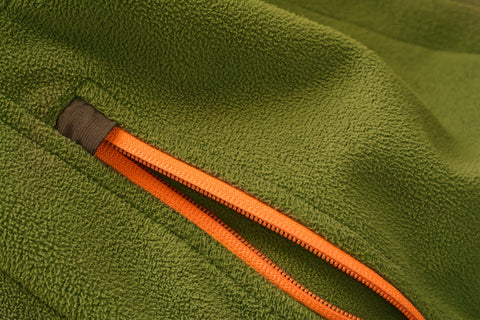What is Fleece Fabric?
Fleece is a synthetic product made from man-made materials. In addition to being soft and having a napped surface, polar fleece is an excellent insulator. Due to its ability to retain body heat well, it is an ideal garment for cold weather conditions. This coat is made of 100% synthetic material, derived from plastic, rather than a fluffy coat made of sheep's wool. Due to its softness, warmth and breathability, this material is ideal for outerwear and other cosy items.
What is Fleece used for?
All kinds of garments can be made from fleece, but warm clothing is the most common use.
The insulating properties of polar fleece make it the ideal fabric for keeping warm. Polyester can also be used to make the following things:
- Ear Warmers
- Vests
- Hats
- Coats
- Gloves
- Fleece Jackets
- Throw Blankets
- Cardigans
- Scarves
- Sportswear & athletic garments
Fleece fabric is commonly used in outdoor and hard-wearing clothes used in winter months
What can I make with Fleece?
We offer a wide range of colours and patterns of premium fleece fabrics that are suitable for a wide range of sewing projects, such as jackets, blankets, hats and scarves. Due to its insulating properties, it is ideal for making blankets, throws, jackets, hoodies, and accessories. The fleece fabric we offer can be used to create clothing and home décor items that are both stylish and practical.
What does Fleece feel like?
As a result of the plush nature of fleece, it has a soft feel. It is this construction which makes fleece fluffy, which is always a plus when it comes to being used against your skin. As an added bonus, it can provide a soothing and warming feeling to your body under the right conditions, which makes you feel comfortable and relaxed.
Properties Of Fleece: Advantages, Disadvantages & Characteristics
With its many properties, fleece was originally designed as an outdoor garment but has now been adapted into blankets, sheets, and towels for use at home due to its light fabric and many air pockets.
Is Fleece a good material? Here is a quick view into the advantages, disadvantages and characteristics of fleece fabrics.
| ✓ | X |
| Water resistance | Builds up static |
| Breathable material | Not windproof in extreme weather conditions |
| Resists wrinkles & creases | Should not be tumble-dried |
| Can be machine-washed in cold water | Can’t be washed at high temperature |
Various Types of Fleece Fabric
The fleece material is a synthetic material made of polyester that has been specially processed to produce a material that is both warm and soft, while also being thick and warm. In terms of density and appearance, fleece is available in many different varieties. Among the most common types are:
1. Micro fleece/ Lightweight fleece – is an excellent material for lining garments as it is thin and light.
2. Fleece of medium thickness – best suited for outdoor activities in winter months, due to its high level of insulation and airtightness.
3. Textured polyester fleece/ Terry Fleece– usually arranged into fluffy materials that resemble fur, but can take on other forms as well.
Is Fleece eco-friendly & How long does Fleece take to break down?
The production of fleece is heavily dependent on synthetic materials, primarily polyester, that come from non-renewable sources. Environmental concerns arise from this process, especially regarding the exhaustion of resources and the emission of carbon dioxide during production. A polyester fibre is manufactured from non-renewable, non-biodegradable, and carbon-intensive resources. In the process of decomposing, this synthetic fabric takes between 20 and 200 years, polluting marine bodies and harming the environment.
The durability of fleece may not be comparable to that of fabrics such as wool. A garment's appearance and texture may change as a result of pilling and loss of softness over time. A fleece garment can still last a very long time if it is properly cared for and maintained.
The fleece can shed microplastic synthetic fibres during washing, which is one of its major drawbacks. Plastic particles can enter water bodies, causing pollution and possibly harming marine life. Several efforts are underway to address this issue, including the development of washing machine filters that trap microplastic fibres and, using recycled plastic.
A Brief History of Fleece
Polyethylene was first explored by Malden Mills, an American textile manufacturer now known as Polartec, in the late 1970s.
By the mid-20th century, Synchilla fleece was widely used in sports and outdoor clothing in the fashion industry. The popularity of fleece can be attributed to its lightness, warmth, and colourful nature, as well as to its relative affordability, and it completely changed the way we dress in cold weather as a durable fabric.




